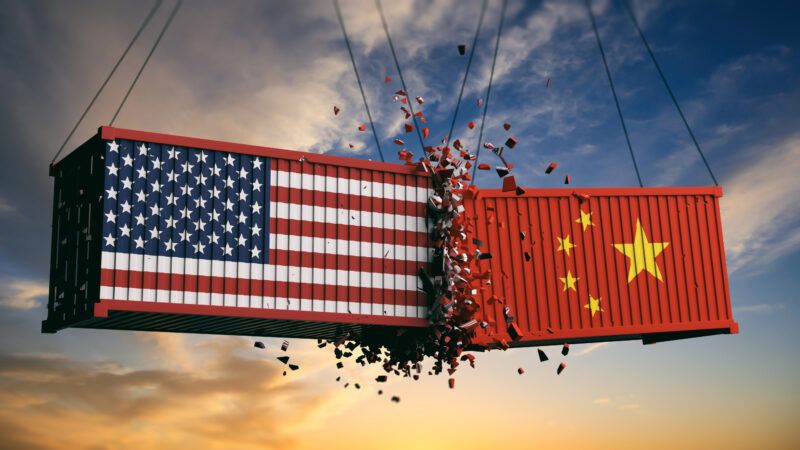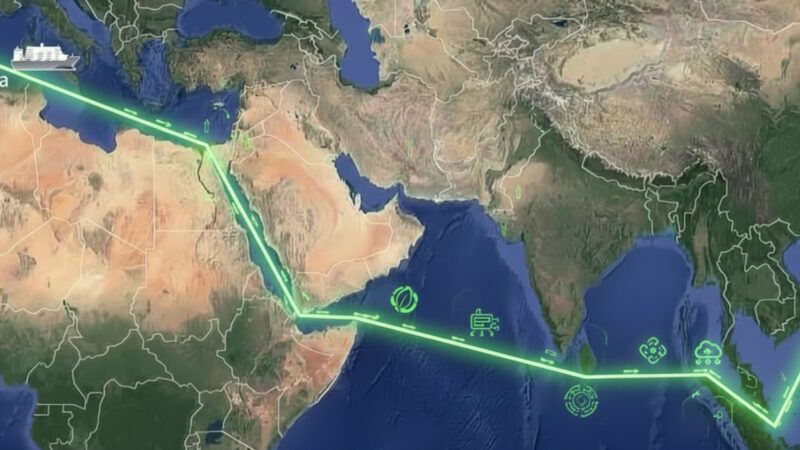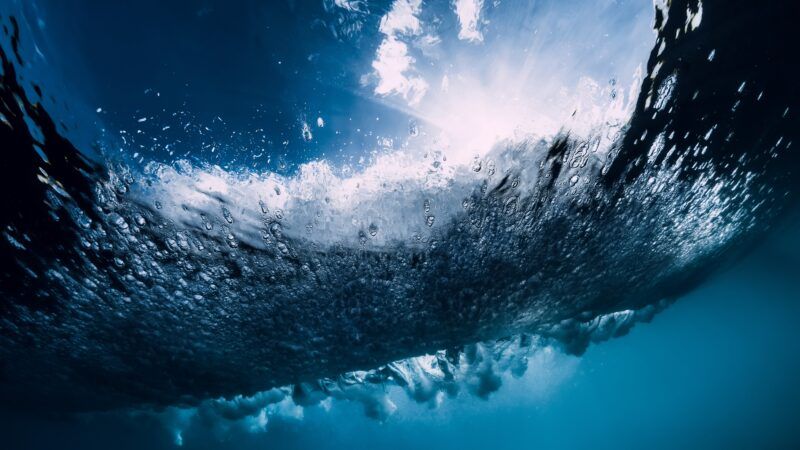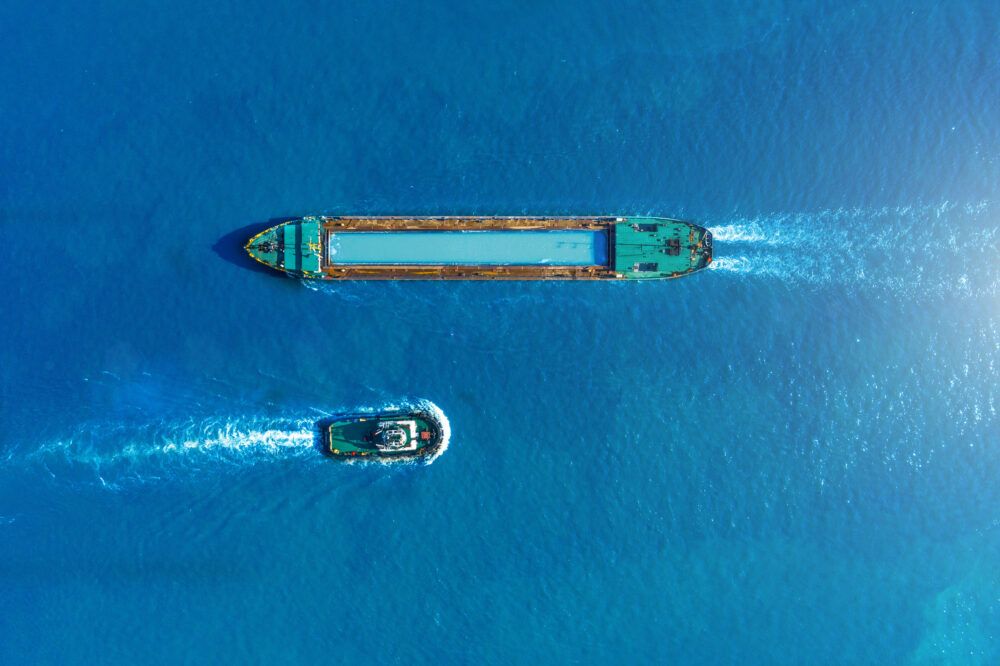 The regulations of these four key players can determine the direction and pace of decarbonisation in the coming years. (Getty Images)
The regulations of these four key players can determine the direction and pace of decarbonisation in the coming years. (Getty Images)
The course of regulations to decarbonise the maritime sector: IMO, EU, US and China’s strategies
In a critical decade to reduce greenhouse gas emissions from shipping, regulation and policy are key to unlocking funding streams and implementing the necessary changes. To better understand the current context, its opportunities and challenges, a DNV study analyses the regulations of the International Maritime Organisation, the European Union, the United States and China, four key players in the international maritime sector.
 The regulations of these four key players can determine the direction and pace of decarbonisation in the coming years. (Getty Images)
The regulations of these four key players can determine the direction and pace of decarbonisation in the coming years. (Getty Images)
Regulations, key to decarbonisation
DNV's ‘Maritime Forecast to 2050’ report identifies the three main keys that may determine the process of ship decarbonisation from this decade onwards: policies and regulations, access to investors and capital, and the expectations of customers and ship owners.
Timing is critical. With carbon-neutral fuels expected to be in short supply, the maritime industry needs to explore all decarbonisation options to achieve a 20% reduction in greenhouse gas emissions by 2030 and continue to reach net zero emissions by 2050 (the targets set by the International Maritime Organisation).
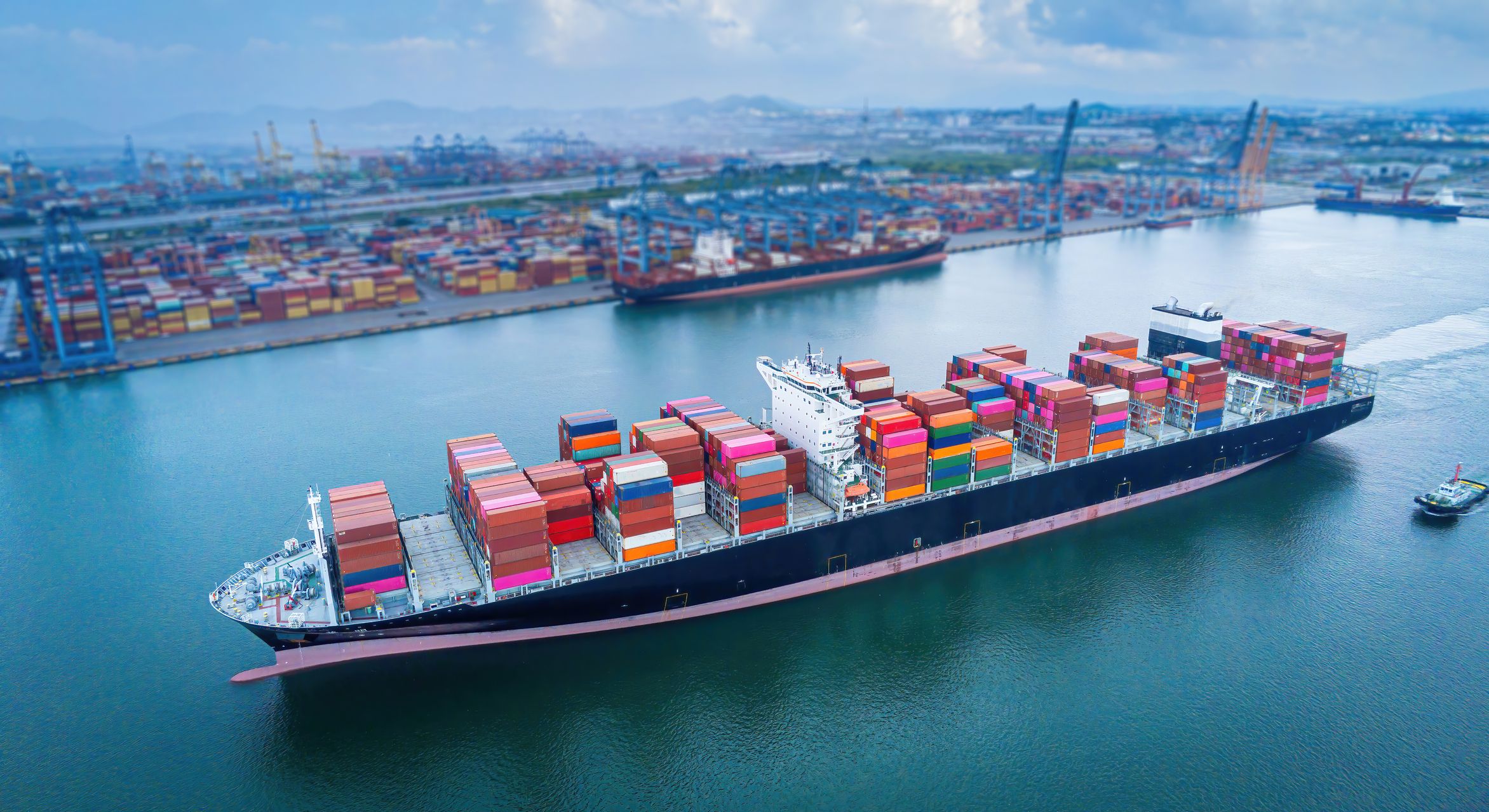
If significant measures are not taken during this decade, it will be very difficult to achieve the goals set by the Paris Agreement. In other words, keeping the rise in global temperatures below 2ºC and as close as possible to 1.5ºC (taking the pre-industrial average as a reference).
The first of the three keys that DNV points out, the approval of policies and regulations, is fundamental to define the framework in which all other actions will take place. "Regulation plays a crucial role in accelerating the decarbonisation of maritime transport in various ways: setting standards, offering economic incentives and creating a level playing field," explains Javier Garrido, researcher at the Centre for Innovation and Transport (CENIT) and PhD student at the Port of Barcelona.
In this process of decarbonisation, four actors play a fundamental role, either because of their influence in international negotiations or because of the size of their fleet: the International Maritime Organisation (IMO), the European Union (EU), the United States and China.
There are three keys to the decarbonisation of ships from this decade onwards: policies and regulations, access to investors and capital, and the expectations of customers and ship owners
IMO's new strategy
In 2023, the IMO has presented important regulatory developments with the aim of accelerating the decarbonisation of the sector. "This is essential, given that maritime transport is international and therefore global objectives and regulations must be established," Garrido points out.
The IMO's previous targets aimed to achieve a 50 % reduction in emissions by 2050, taking 2008 figures as a reference. The revised strategy sets much more ambitious targets, including a 20 per cent reduction in emissions by 2030 and 70 per cent by 2040, with a final goal of net zero emissions by 2050.
"In addition to this greater common ambition to achieve net zero greenhouse gas emissions by 2050, there is the commitment to ensure the adoption of zero or near-zero emission alternative fuels by 2030 and to set indicative 2030 and 2040 checkpoints," Garrido adds.
The IMO's goal is for zero or near-zero greenhouse gas emitting technologies, fuels and energy sources to account for at least 5% of the energy used by international shipping, while working towards 10%.
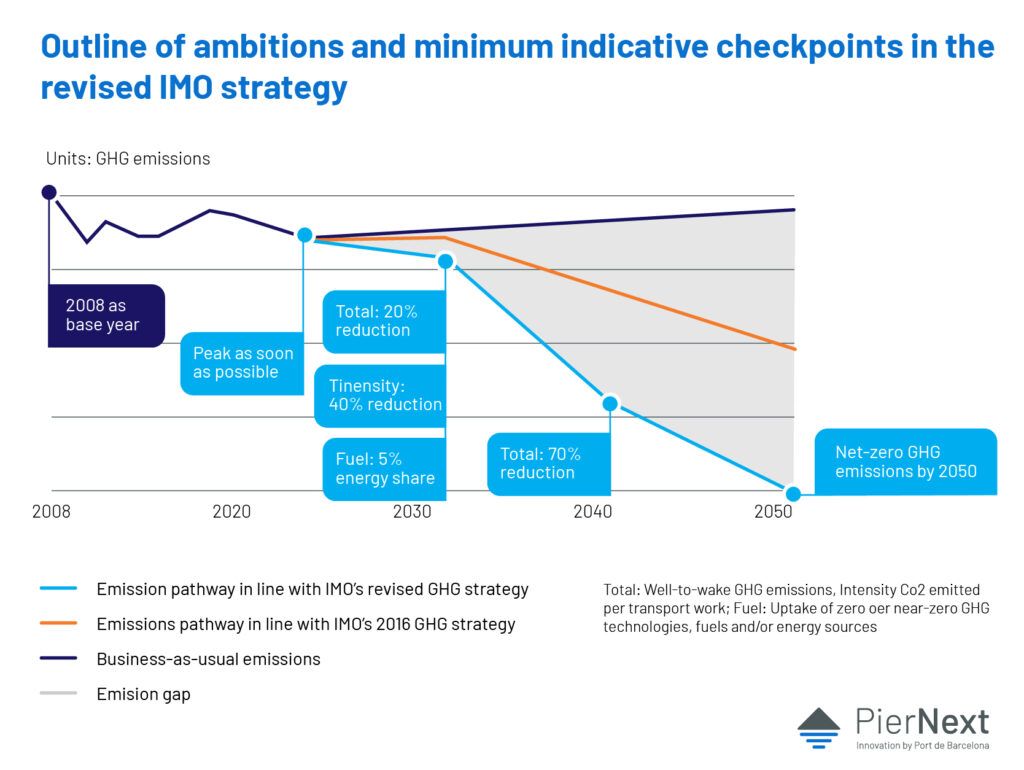
© DNV 2023
The EU's key role on the international stage
The EU has also introduced important regulatory developments. One of the highlights is the inclusion of shipping in the EU Emissions Trading System (EU ETS) from 2024. This implies that specific emission reduction requirements will be set for ships, which will be reduced each year in line with the EU's decarbonisation targets.
Other key measures adopted by the EU include the FuelEU Maritime initiative, which aims to increase the use of sustainable alternative fuels in maritime transport and ports, and the Alternative Infrastructure Regulation (AFIR), which promotes the installation of more alternative fuel refuelling and recharging stations.
These two regulations are part of the Fit for 55 package, a series of measures that aims for the EU to reduce its greenhouse gas emissions by at least 55% by 2030 compared to 1990 levels, and to achieve climate neutrality by 2050.
"The EU plays an important role on the international scene in leading the transition to a green economy. Europe is making a special commitment with the Fit for 55 package, a very courageous bid to lead the decarbonisation of maritime transport at European level that will have an impact internationally. However, it is essential that in the coming years they are well aligned with the objectives defined by the IMO, to avoid competitive disadvantages between the different international markets," reflects Garrido.
As DNV points out, for the EU decarbonisation is also an opportunity to decouple economic growth from the use of resources and to create new economic opportunities linked to clean technologies and solutions.
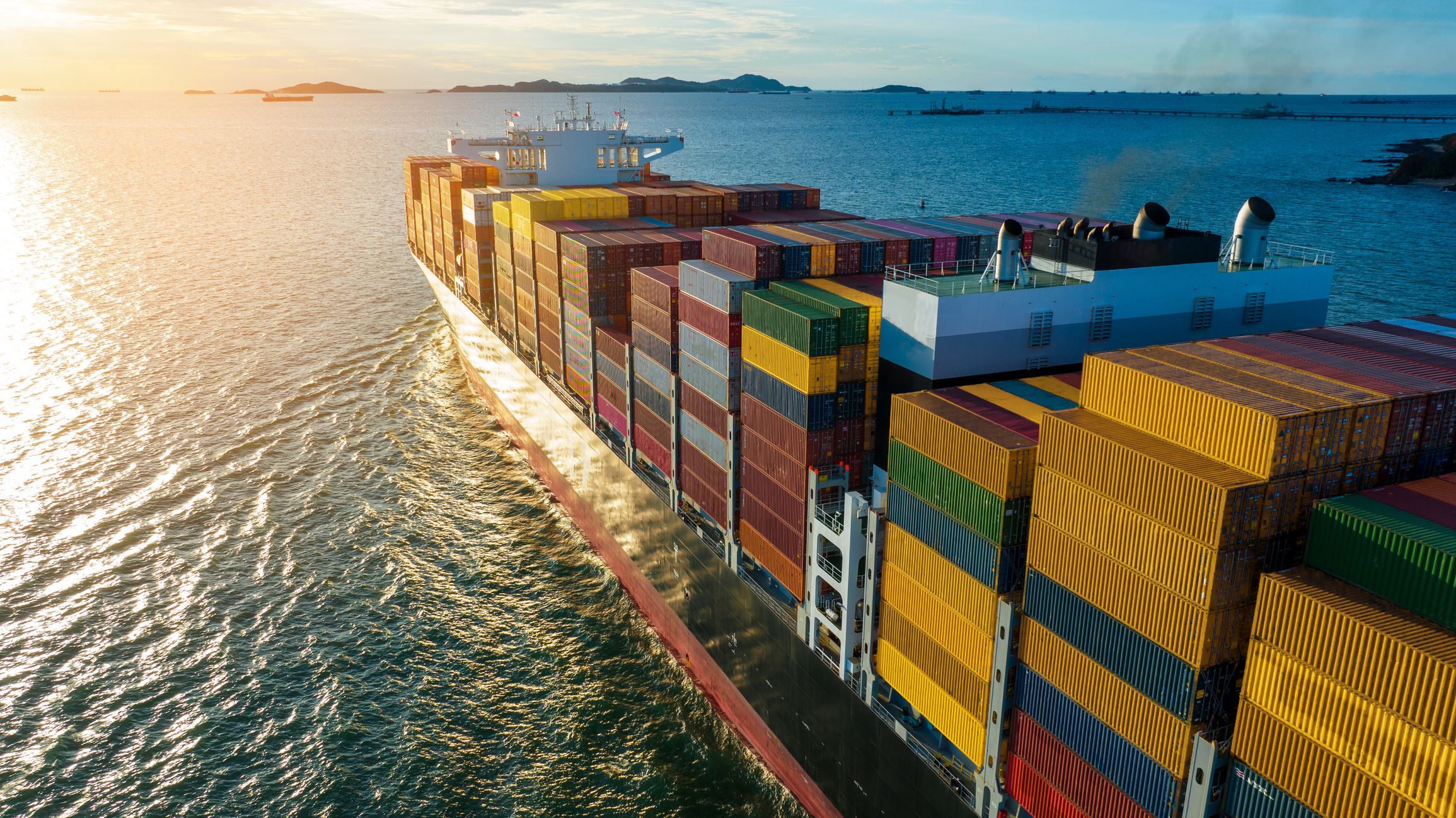
The US roadmap
As explained in the study 'Maritime Forecast to 2050', the United States does not have a climate target in its national laws, but its rejoining the Paris Agreement in 2021 binds the country to a commitment to reduce its greenhouse gas emissions in the coming decades. It will be necessary to wait to learn more about its actual targets, which are key to determining the future of decarbonisation.
"The fact that the US does not have a climate target in its domestic laws may have a negative impact on the fight against climate change at the international level," Garrido reflects. "The US is a major player in international trade and climate negotiations. Therefore, it could hinder global efforts to reduce greenhouse gas emissions and meet climate targets."
As DNV explains, some steps have been taken in recent years. The US State Department and the White House have issued a long-term strategy committing to achieving net zero emissions by 2050. In addition, several federal agencies have developed a roadmap to reduce emissions from the transport sector, including shipping, which was published in January 2023.
"The roadmap for the maritime sector outlines actions on research and innovation, on commitments by domestic and international stakeholders, and on the development and implementation of a comprehensive, comprehensive and integrated approach,” the report states.
China's possibilities
The fourth major player in global decarbonisation is China, a country that plays a very important role in the negotiations and also concentrates a large amount of maritime activity. "China is part of the IMO and has participated in the adoption of global regulations and targets for emission reductions in shipping. Its collaboration in these initiatives is essential to achieve a coordinated approach at the international level," Garrido explains. "It also plays a very important role in decarbonisation, as it is home to the 10 largest ports in the world.”
"If China does not complete the transition to a low-carbon economy, it will be impossible to reach global climate targets. The country emits 27% of the world's carbon dioxide and one-third of the world's greenhouse gases," he adds.
In September 2020, China announced its goal of peaking carbon emissions by 2030 and achieving carbon neutrality by 2060, known as the 30-60 targets. In the maritime sector, the country has presented its intention to develop ships powered by electric power and liquefied natural gas (LNG), among other initiatives.
The regulations of these four key players can determine the direction and pace of decarbonisation in the coming years. In other words, they have a key role to play in reducing the rise in temperatures and avoiding the worst consequences of climate change.



